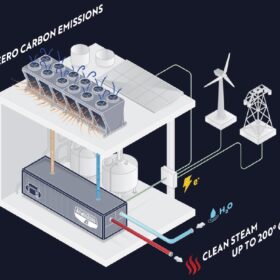German startup unveils PV charging-parking system for e-scooters, bikes
German startup Domum has developed PV charging-parking systems for e-scooters and e-bikes. They use up to 660 W of solar panels.
Israeli startup develops PV-driven cooling system based on compressed air
Storage Drop has secured a grant from the European Union to develop its PV-driven cooling system technology for low temperature environments. The system is based on compressed air energy storage technology and a hydraulic isothermal compressor with a water pump that compresses the air in an isothermal process.
Hybridizing thermoelectric generators with photovoltaic ground-source heat pumps
Researchers in South Korea have analyzed the feasibility of using thermoelectric generators in combination with residential solar-assisted ground-source heat pumps and have found that the thermoelectric devices may act as a suitable power source for data loggers and other sensors in a building system.
New method to find right tilt angle for PV systems located in high-latitude, cold regions
A group of researchers from Sweden has developed a new model to find the optimal tilt angle in PV installations located at high latitudes. The new approach takes into account, among other factors, the effect of transmittance change based on snow.
K2 Systems to offer mounting system for green solar roofs
Germany’s K2 Systems says that its new mounting system will be available in the spring. It supports module elevation of 10 degrees to 15 degrees.
Quantifying effect of cooling, cleaning in PV systems operating under desert conditions
Scientists in Oman have analyzed the effect of soiling, cleaning, and water injection on the performance of PV panels in Oman. They have found the use of water for cooling may increase power yield by up to 23.9%.
US startup develops air-source steam heat pump for industrial use
Colorado-based AtmosZero has closed a Series A funding round that will help it accelerate the commercialization of its Boiler 2.0 technology. The air-sourced heat pump generates steam for industrial use and can be combined with PV generation and storage.
Beny launches PV-ready EV charging station
Beny New Energy says its new charger can deliver power at a range of 360 kW—600 kW. It supports various connection standards.
Dynamic photovoltaic blinds for glaze-façade buildings
Scientists from China have built photovoltaic blinds that can reportedly regulate thermal load, daylight penetration, and energy generation in high-rise buildings with glazed facades. Their creators claim the blinds offer superior architectural aesthetics and notable energy-saving potential.
Austa releases new three-phase inverter series
The Chinese manufacturer said its new inverters can support up to 120% three-phase unbalanced output and provide 1.5 times DC overmatching.










